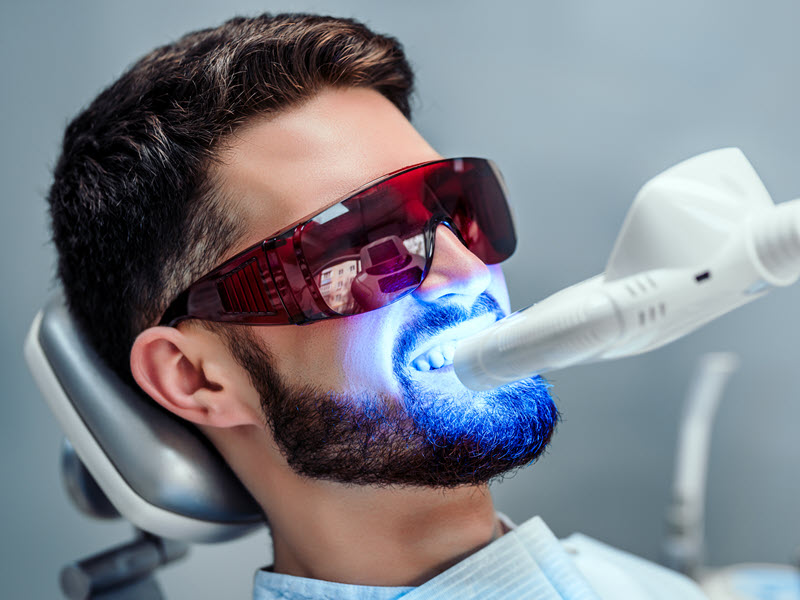Analysis of Dental Emergency Costs
Emergency dental care deals with urgent issues that require swift attention. These issues often result from trauma, severe tooth pain, and sudden swelling. A dental emergency can involve a knocked-out tooth, a broken tooth, or a cracked tooth. Signs like these demand an emergency dentist who can offer pain relief and treatment to prevent further damage or infection.
Seeking immediate care to get emergency dental treatment is crucial. Ideally, you should set up an emergency dental appointment with your primary dentist. Your dentist can oftentimes handle dental emergencies but usually only if your dental emergency occurs during office hours.
A dedicated 24-hour emergency dentist provides consultation and urgent dental care beyond standard office hours. For acute tooth pain or a toothache that doesn’t fade, patients should contact an after-hours dentist.
Cost of Emergency Dental Services
Emergency dental care can vary significantly in cost, influenced by the type and urgency of treatment required. Factors like geographical location, the complexity of the procedure, and insurance coverage play critical roles in determining expenses. Emergency dentist cost factors that are presented below are merely a guide for determining overall costs.
Typical Fees and Charges
Consultation and X-ray: Initial consultations typically include an x-ray to assess the dental issue. An x-ray ranges from $25 to $250, while the consultation fee may add to the overall cost depending on the clinic.
Fillings: Minor cavities addressed with simple fillings can cost anywhere from $50 to $300 per tooth, depending on the material used and the size of the filling.
Chipped Tooth: Cost for a chipped tooth can vary widely depending on the severity of the chipped tooth. If it is a cosmetic chip, the cost could be as low as $100 in some dental offices – especially if the chip isn’t visible on the front teeth. More significant chips can require more complex dental procedures like Veneers, a dental crown, a root canal, and even a tooth extraction if it is a severe chip. Costs under these circumstances could exceed $1,000.
Root Canal: More complex procedures like a root canal on a front tooth are priced between $700 and $900. Molars, which are more difficult to treat, may push costs higher – up to $1,200 or more.
Dental Crowns: The cost of dental crowns varies based on material (porcelain / metal / resin). Typically the costs will be between $1,000 and $1,500 for a new dental crown. If your dental crown was merely loose, it can oftentimes be re-cemented back on. Dental crowns that have fallen off due to becoming damaged will have to be completely replaced.
Emergency Tooth Extraction: The cost of an emergency tooth extraction will vary based on the location of the tooth and the difficulty of extracting the tooth (whether or not surgery is required). A simple tooth extraction can cost as little as $100, and a highly complex extraction can cost $1,000 or more.
Dental Implants: A single dental implant can cost as little as $3,000. While full mouth implants can cost $90,000 or more. You may wish to avoid selecting a dental implant based solely on price. There are differences in techniques used and associated recovery times, which makes price shopping for dental implants a risky proposition.
Understanding Dental Insurance Coverage and Payment Options
There are a variety of ways that you can use to pay for all or part of your visit to the emergency dentist
You don’t need dental insurance to receive emergency treatment, but dental insurance can sometimes cover the cost of dental procedures. There are also ways other than insurance to pay for the cost of an emergency dental visit.
Dental Insurance: Most dental insurance plans cover basic procedures such as fillings and extractions; however, more advanced treatments may only be partially covered. It’s critical that patients consult their insurance plan details to understand the extent of coverage.
Emergency Services: Some plans include emergency services, which can significantly reduce the out-of-pocket costs for unplanned procedures. Coverage details will specify limits and exclusions.
Medicaid: In certain states, Medicaid may cover emergency dental treatments for eligible individuals. This can include essential services to alleviate pain or infection.
Payment Plans: Many dental offices accept payment plans often provided through third parties like Care Credit. With CareCredit, you’re allowed to pay for your emergency dental care using structured payments over time.
Insurance Plan Limitations: Keep in mind, dental insurance plans come with annual maximums and may not cover all emergency dental care needs. Most dental insurance plans won’t cover even a small portion of many procedures, such as cosmetic treatments. It’s essential to understand your dental insurance to avoid unexpected costs.
Emergency Room Dental Treatments are More Expensive
When you have a dental emergency, your first action should be to call your regular dentist. Most dental offices have extra slots available to treat their patients – and sometimes new patients – that are experiencing dental emergencies.
Dental emergencies don’t always happen during your family dentist’s business hours, which is why if your regular dentist isn’t available you should look for emergency dentists in your area. Larger metro areas typically have emergency dentists available who have extended hours and are sometimes open on weekends and holidays.
Your last resort will be the hospital ER. While still an extremely valuable resource, your local ER won’t have a dentist on staff that can perform dental procedures. The ER can however prescribe and administer medication that can fight infection and alleviate your pain.
Just know that you should always seek treatment during a dental emergency, but going to the emergency room can be more costly than other options.
According an American Dental Association study, visits to the ER cost three times as much as a visit to the dentist – averaging $749 to be treated during an ER visit. Costs can go much, much higher if a patient is admitted to the hospital for a longer stay.
Most of these patients going to the ER for dental treatment (around 80%) went to the ER for cavities causing a toothache, jaw pain, or dental infections caused by abscesses. These conditions can generally be avoided with routine preventive dental care.
Many of these patients likely waited until the symptoms were severe (outside of their dentist’s normal business hours). Call your dentist at the first hint of unusual symptoms rather than waiting until your pain is so bad that you have to go to the ER.
Common Dental Emergencies and Treatments
DO NOT WAIT.
When a dental crisis strikes, obtaining the correct treatment swiftly is crucial to prevent further harm or complications. Waiting can make your pain worse, the condition worse, and can require much more expensive treatment as your problem intensifies.
Toothaches and Pain Management
Toothaches signal various issues, from minor cavities to serious infections. Initial pain management may include over-the-counter pain relievers and cold compresses. However, if pain persists, this indicates a need for professional evaluation. A dentist may suggest procedures like root canals for relief and recovery, especially if a deep infection or significant tooth decay is the cause.
Trauma and Accidental Injuries
Accidents, sports injuries, or falls can lead to dental trauma, resulting resulting in a loose permanent tooth. Even more serious results like a cracked tooth, broken tooth or even a tooth that is completely knocked out. Immediate action for a knocked out tooth involves rinsing the mouth with warm water and applying a cold compress to reduce swelling. Urgent care from an emergency dentist is vital. Treatments for trauma may involve splinting the tooth back into position, dental bonding, or, in extreme cases, tooth extraction followed by dental implants.
Infections and Abscessed Teeth
Infections in the mouth can lead to an abscess, a painful, pus-filled swelling. This condition can spread and threaten overall health without prompt treatment. An abscess typically requires antibiotics to address the infection and possible drainage to relieve pressure. If the abscess originates in the tooth, treatment options may include a root canal or extraction to prevent the spread of the infection.
Handling Dental Emergencies Until Professional Help is Available
In the event of a dental emergency, quick and appropriate first aid makes a difference. If someone faces a toothache, they should clean the area with warm water and apply a cold compress to ease pain and swelling. It’s important to avoid placing aspirin directly against the gums near the aching tooth, as this could cause gum tissue damage.
For a knocked-out tooth, one should handle it by the crown and rinse off the root if it’s dirty. Do not scrub or remove any attached tissue fragments. If possible, gently insert and hold the tooth in its socket. If that’s not an option, place the tooth in a cup of milk and seek immediate help from an emergency dentist.
Patients with bleeding after a tooth extraction should bite on a gauze pad for 30–45 minutes. If the bleed persists, a damp tea bag can serve as an effective alternative due to the tannic acid which can help form a clot.
If swelling or severe pain occurs, visit an emergency room or call a dentist since this could signal an infection that might spread if unaddressed.
Dental Emergency FAQ
What is the cost of an emergency tooth extraction without insurance?
Without insurance, the cost for an emergency tooth extraction can vary widely, typically ranging between $100 and $1000 depending on the complexity of the case and the location of the dental practice.
How do emergency dentist costs differ with insurance coverage?
Emergency dentist costs with insurance coverage can differ significantly. In most cases, insurance can reduce but rarely completely cover out-of-pocket expenses. However, one should verify coverage details as benefits vary across different dental plans.
What are the typical fees for a 24-hour emergency dentist?
Fees for a 24-hour emergency dentist can be higher than regular appointments. Patients may encounter rates from $100 to $1,200, factoring in the urgency and type of dental service required.
Can the emergency room address dental pain, and if so, what are the potential costs?
An emergency room can provide relief for dental pain, but typically, they offer temporary solutions as they don’t typically have a dentist on staff who is able to perform dental procedures. Costs for ER treatment tend to be significantly higher (as much as 3x according to the American Dental Association) than costs associated with going to your local dentist or emergency dentist.
What constitutes a dental emergency and what steps should be taken when one occurs?
A dental emergency includes severe pain, infection, or bleeding that requires immediate attention. Immediate steps include contacting a dentist or seeking help from a program that guides out-of-hospital dental care.
How much can I expect to pay for a dental procedure to alleviate a toothache?
Prices for procedures that alleviate toothache vary. Simple fillings to treat cavities may start at $100, while more complex interventions like root canals or extractions can exceed $1,000 without insurance.















